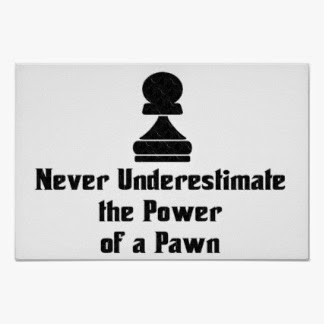"Black is a slave that is forced into oppression, unless it lashes out skillfully to free itself of tyranny." ~The Dark Knight
IS BLACK TRULY CURSED?
Yes it is absolutely cursed, but it is also very blessed. Simply put, there can be both pros and cons to being black rather than white in chess. For starters for those of you who may not have realized it by now, black is hopeless to win a positional game if both players are equal in playing solely positional chess. You may have heard the terms "tactical" and "positional" being opposites in chess strategy, but let me clarify what is meant by positional. A positional game is a tactical game, but it simply lacks many of the tactics that are often used in chess games. Tactics such as pins, skewers, forks, discovered attacks, and other forms of double attacks will not be seen in a strictly positional game. In a positional game, players will simply be vying for the center and trying to protect their center pieces with more pieces than their opponent. Now the reason why black is cursed to lose in this fight is rather simple: white goes first so white creates the position while black tries to maintain it. In other words, black is always going to wind up the loser because white will always have him out manned, out gunned, and out numbered. So what can be done to fix this injustice?
Well the first thing that should be done is having the right kind of attitude going into a game with black. It's very easy to become a sore loser and tell yourself that you have a handicap just because you are black. You need to realize that someone has to go first in just about every sport. In football, soccer, basketball, baseball, etc, some team will have the ball first. But does that improve their odds in winning the game? Absolutely not! Instead of thinking that you are doomed, start playing solid defense until the ball is in your possession. In fact, one of the keys to winning a great many chess games is having a solid defense. The first thing a player should do when faced with a defensive decision is to not panic and realize that the game may not be lost. The next thing that the defense needs to do is to hold its ground. You would be surprised how frustrating a game can be for white when black holds its ground just waiting for white to slip up. But it's that kind of attitude and determination that wins games for black more times than not. Also black needs to have an aggressive defense and be looking for ways to throw white off of its positional game. Tactics such as undermining and deflection may accomplish this and give black the edge it needs to take over the game. With so many tactics that can be employed in a game of chess, white is actually limiting itself if it seeks to play just positional tactics. Black may also have an advantage of going after white as well. Since white has to lead, its placement of pieces may alert black of white's next move. Hence black can sometimes anticipate white's moves enough in advance to strategize ways to outsmart white.
So in conclusion, yes black does have to take the rear seat behind white, but is equally capable of reaching its destination, that is victory lane.















